
Mining company Rio Tinto PLC plans to create another, larger, plant to process iron ore for subsequent steel smelting, operating on raw biomass instead of coking coal.
The decision was made after the success of the first pilot project implemented in Germany, writes MarketWatch. The project has been running for the past 18 months in conjunction with Finland’s Metso Outotec and the University of Nottingham.
“The results of the first test phase are very promising,” said Rio Tinto Chief Commercial Officer Alf Barrios.
The location of the new plant has not yet been selected.
The steel industry accounts for 8 percent of the world’s carbon dioxide emissions, MarketWatch noted. Creating yellow ore processing plants using biomass instead of coal would help Rio Tinto’s plans to reduce emissions.
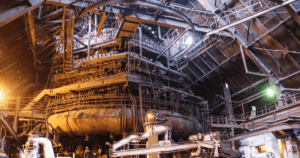
Metinvest, the largest Ukrainian mining and metallurgical holding, in January-March this year reduced steel production by 8% compared to the same period last year and by 25% compared to the previous quarter – to 1.962 million tonnes, according to a press release from the parent company Metinvest B.V.
According to the report, production of pig iron decreased by 15% and 31% respectively – to 1.828 million tonnes, coke – by 33% and 28% respectively, to 783,000 tonnes.
Metinvest added that in January-March this year, the group reduced the total production of iron ore concentrate by 3% compared to the same period last year and by 10% compared to the previous quarter, to 2.786 million tonnes.
The output of pellets amounted to UAH 1.281 million, which is 35% less than in Q1 2021, but 34% more than in the previous quarter, while the output of coking coal concentrate in the first quarter of this year increased by 29% compared to Q1 2021, but decreased by 14% from Q4 2021 – to 1.276 million tonnes.
Metinvest is a vertically integrated mining group of companies that manages assets in every link of the production chain from iron ore, coal mining and coke production to the production of semi-finished products and finished products from steel, pipes and coils, as well as production of other high value-added products. The group consists of mining and metallurgical enterprises located in Ukraine, Europe and the United States, has a sales network covering all key global markets.
Metinvest’s main shareholders are SCM Group (71.24%) and Smart-Holding (23.76%), which jointly manage the company.
Metinvest Holding LLC is the management company of Metinvest Group.
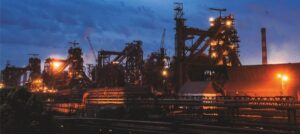
“Metinvest”, the largest Ukrainian mining and metallurgical holding, in January-March of this year, reduced steel production by 8% compared to the same period last year, and by 25% compared to the previous quarter – to 1.962 million tons, n pig iron – by 15% and 31%, to 1.828 million tons, the total production of coke – by 33% and 28%, respectively, to 783 thousand tons.
According to a press release from parent company Metinvest B.V. on operating results for the first quarter of 2022, in January-March of this year, the group reduced the total production of iron ore concentrate (IOR) by 3% compared to the same period last year and by 10% quarter-on-quarter to 2.786 million tons, pellets by 35% and increased by 34%, respectively – up to 1.281 million tons, the total production of coking coal concentrate – increased by 29% and reduced by 14%, respectively, to 1.276 million tons.
As reported, according to the results of 2021, Metinvest increased steel production by 15% compared to 2020 – up to 9.533 million tons, pig iron – also by 15%, up to 9.709 million tons, but reduced the total production of coke by 5% – to 4.551 million tons. In 2021, Metinvest increased the total production of iron ore concentrate (IRO) by 3% compared to the previous year – up to 31.341 million tons, pellets by 18% – up to 5.811 million tons and the total production of coking coal concentrate – by 92%, up to 5.542 million tons.
Metinvest is a vertically integrated mining group of companies that manages assets in every link of the production chain from iron ore and coal mining and coke production to the production of semi-finished products and finished products from steel, pipes and coils, as well as the production of other high value-added products. The group consists of mining and metallurgical enterprises located in Ukraine, Europe and the USA, has a sales network covering all key global markets.
Metinvest’s main shareholders are the SCM group (71.24%) and Smart Holding (23.76%), which jointly manage the company.
Metinvest Holding LLC is the management company of the Metinvest group.
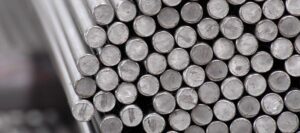
Global demand for steel in 2022 will increase by only 0.4% and amount to 1.84 billion tons (1.834 billion tons in 2021), the World Steel Association predicts.
In 2023, according to WSA expectations, steel demand will increase by 2.2%, to 1.881 billion tons.
The total demand for steel in the Russian Federation, CIS countries and Ukraine this year, according to WSA forecasts, will fall by 23.6% to 44.6 million tons (58.5 million tons in 2021). In 2023, an increase of 1.1% is expected, to 45.1 million tons. At the same time, steel consumption in Russia will fall by 20%, to 35.1 million tons against 43.9 million tons in 2021.
CIS COUNTRIES, DEMAND, RUSSIA, STEEL, WORLD STEEL ASSOCIATION
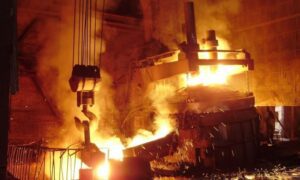
Based on the results of the work of metallurgical enterprises in January of this year, Ukraine increased steel production by 0.7% compared to the same period in 2021, being 13th in the ranking of 64 countries – the world’s main producers of this product, compiled by the World Manufacturers Association steel (Worldsteel).
According to Worldsteel data released on Tuesday, in January 2022, a decrease in steel production was recorded by January 2021 in most countries of the top ten, except for India, the United States, Russia and Iran.
The top ten steel-producing countries in January was as follows: China (81.685 million tonnes, a decrease of 11.2% compared to January 2021), India (10.781 million tonnes, an increase of 4.7%), Japan (7.758 million tonnes, 2.1% less), the United States (7.266 million tonnes, 4.2% more), Russian Federation (6.570 million tonnes, 3.3% more), South Korea (5.980 million tonnes, 1.1% less), Germany (3.259 million tonnes, 1.4% less), Turkey (3.161 million tonnes, 7.8% less), Brazil (2.883 million tonnes, 4.8% less) and Iran (2.8 million tonnes, 20.3% more).
This is followed by Taiwan (China, 2.040 million tonnes, an increase of 2.2%), Vietnam (1.875 million tonnes, a decrease of 4.1%), Ukraine (1.851 million tonnes, 0.7% more), Mexico (1.520 million tonnes, 2.5% less) and Italy (1.5 million tonnes, 20.8% less).
In general, in January of this year, steel production decreased by 6.1% compared to the same period last year, to 155.030 million tonnes.
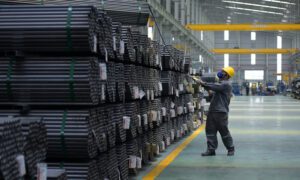
Ukraine in January of this year reduced export of intermediate goods made of carbon steel in quantity terms by 27.9% compared to the same period last year, to 486,479 tonnes.
According to statistics released by the State Customs Service, in monetary terms, export of intermediate goods made of carbon steel increased by 6.1% in January 2022, to $297.675 million.
The goods were mainly exported to Turkey (23.47% of supplies in monetary terms), Italy (20.64%) and Egypt (10.42%).
In addition, Ukraine imported 2,606 tonnes of such products in the first month of the year, which is 2.9 times more than in January 2021. In monetary terms, imports increased by 7.1 times, to $1.546 million. The goods were mainly imported from the Russian Federation (100% of supplies).